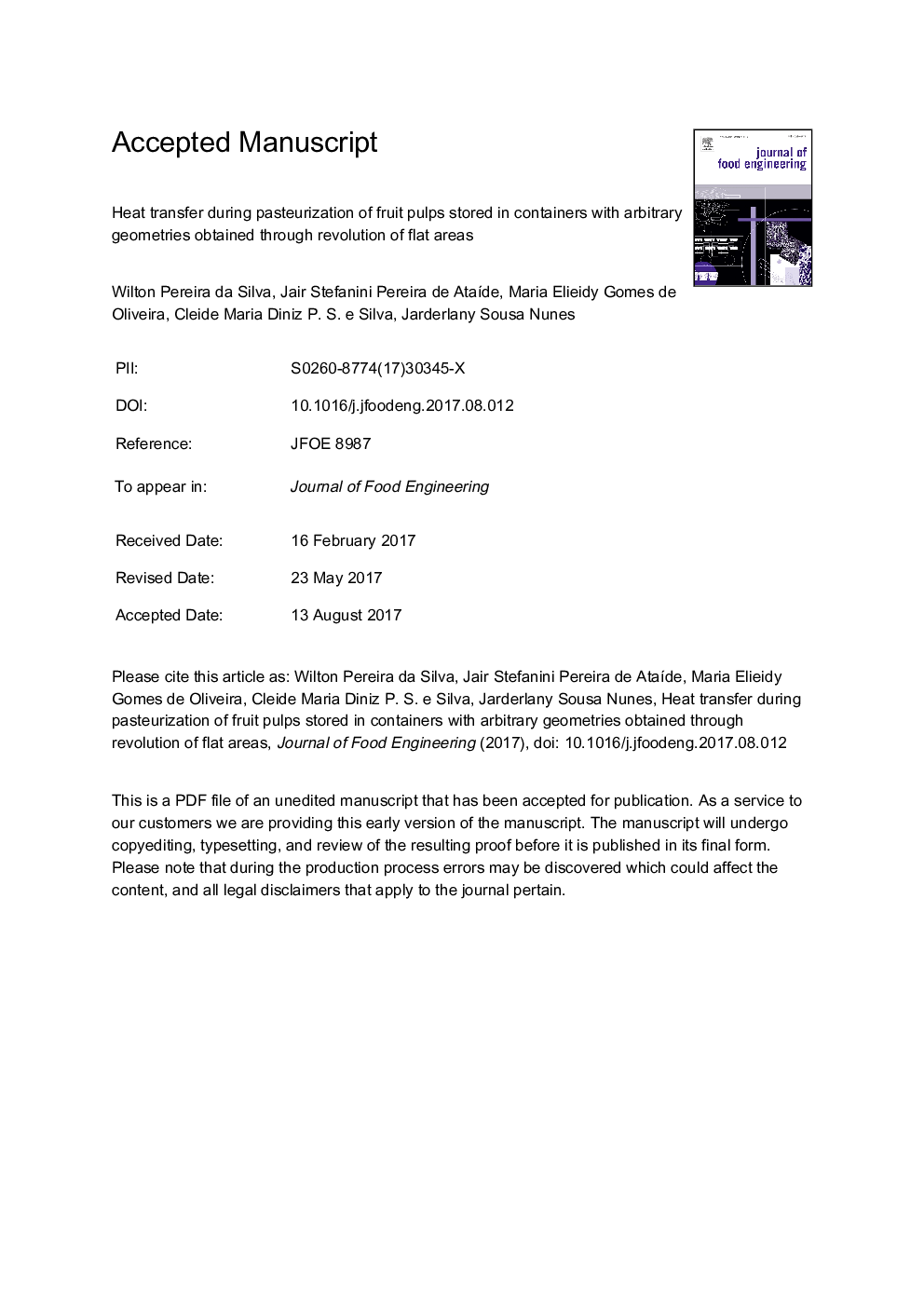| Article ID | Journal | Published Year | Pages | File Type |
|---|---|---|---|---|
| 4908783 | Journal of Food Engineering | 2018 | 39 Pages |
Abstract
Thermal diffusivity of papaya pulp, stored in metal container with arbitrary geometry obtained through revolution of flat areas, was determined through optimization using experimental data. To describe heat conduction during pulp pasteurization, the diffusion equation in generalized coordinates was discretized and numerically solved, through the finite volume method, with a fully implicit formulation. Temperature over time during heating was measured by placing a thermocouple at the point of the container where the equilibrium temperature occurs with greatest delay. Once the expression for thermal diffusivity as a function of local temperature was known by optimization, it was possible to determine, through simulation, the minimum time necessary for the pulp stored in a new container, also with arbitrary geometry obtained through revolution of flat areas, to come into thermal equilibrium with the pasteurization temperature. Microbiological analysis performed before and after the second pasteurization showed that there was a strong reduction of the total microorganisms. Since the thermal equilibrium time was determined through simulation for the new container, the use of a thermocouple for its experimental determination became unnecessary.
Keywords
Related Topics
Physical Sciences and Engineering
Chemical Engineering
Chemical Engineering (General)
Authors
Wilton Pereira da Silva, Jair Stefanini Pereira de AtaÃde, Maria Elieidy Gomes de Oliveira, Cleide Maria Diniz P.S. e Silva, Jarderlany Sousa Nunes,
